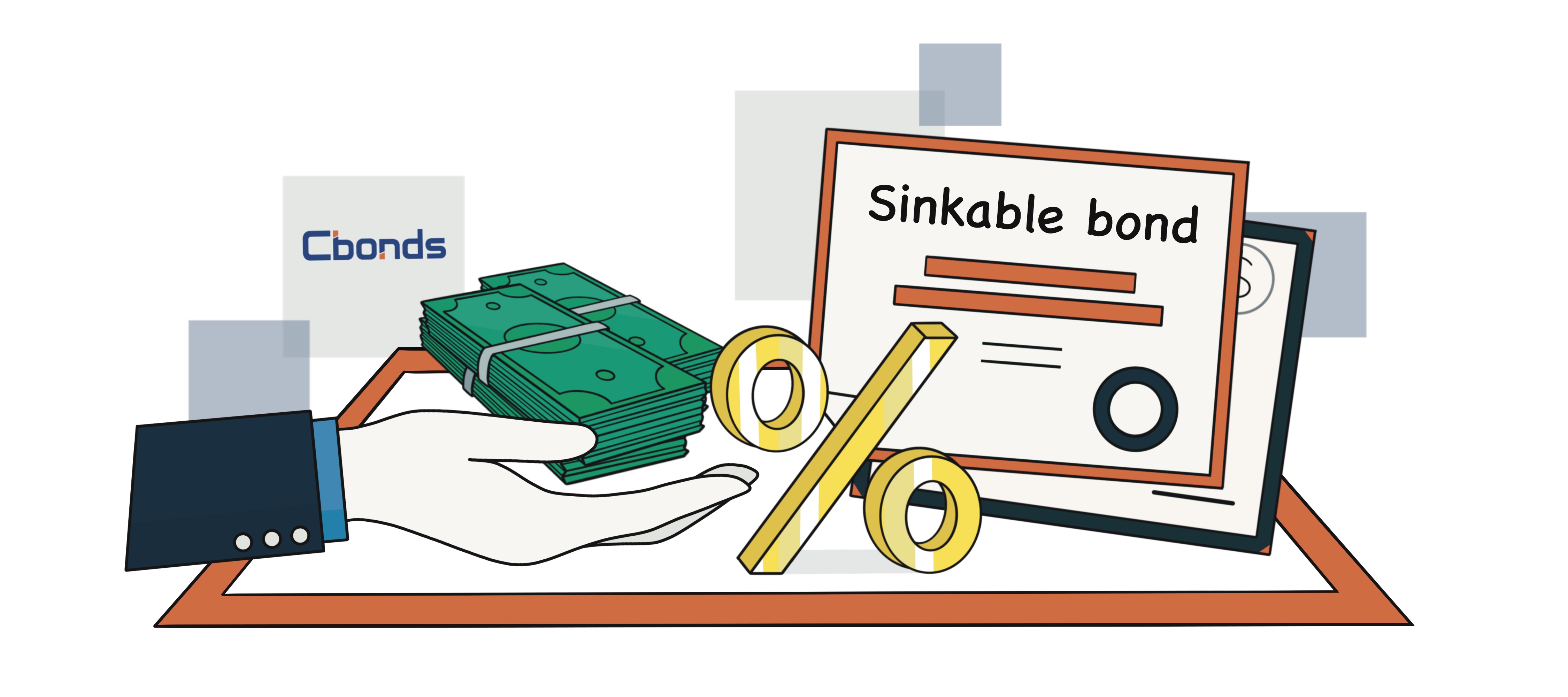By
Konstantin Vasilev Member of the Board of Directors of Cbonds, Ph.D. in Economics
Updated September 11, 2023
What Are Sinkable Bonds?
A sinkable bond is a form of debt instrument secured by a reserve established by the issuer. To gradually reduce borrowing expenses, the bond issuer regularly acquires and retires a segment of these bonds from the open market, utilizing the reserve to cover the costs. Typically, these financial tools come with a provision permitting the repurchase of a part of the bond issue at the prevailing market rate. There are several ways in which a sinking fund can be used to repurchase bonds. The options are to repurchase them periodically on the open market, or at a specific call price, or at the lower of the market price or a specific call price, or to only repurchase at the maturity date of the bonds.
Sinkable bonds offer bond investors a high level of safety due to their cash-backed backing. Nevertheless, their potential return is subject to market fluctuations in bond prices, making it uncertain.

Sinkable Bonds Explained
From the perspective of the corporations and municipalities issuing sinkable bonds, there are several advantages. One key benefit is the ability to fully or partially repay the bond when interest rates dip below the bond’s nominal rate. This allows them to subsequently refinance the remaining borrowing needs at a more favorable, lower interest rate.
Furthermore, by making periodic installment payments on their loans and associated interest, these issuers gradually chip away at the total amount owed by the end of the bond’s term.
Summing up, here are the advantages and disadvantages of sinkable bonds:
Advantages
-
Potential for early debt and liability repayment.
-
Facilitation of timely debt obligation payments upon maturity.
-
Ability to take advantage of lower interest rates by calling back existing debt issues.
-
Enhancement of the issuing business’s goodwill due to early debt payments.
Disadvantages
Determining Yield to Average Life
When evaluating the attractiveness of investing in sinkable bonds, which often have shorter durations than their maturity dates, investors often calculate the bond’s yield to average life. This calculation accounts for the bond’s time before retirement, and the potential income investors can expect to earn.
Example of a Sinking Bond
Let’s consider an example involving Mars Inc., which decides to issue $20 million in bonds with a 20-year maturity. The company establishes a sinking fund of $20 million and creates a call schedule for the next two decades. On each anniversary of the bond issuance, Mars Inc. withdraws $1 million from the sinking fund and calls 5% of its outstanding bonds.
Due to the added repayment stability offered by the sinking fund, credit rating agencies assign the bonds a AAA rating and lower the interest rate from 6.3% to 6%. As a result, the corporation saves $120,000 in interest payments during the first year and continues to realize additional savings in subsequent years.
This increased level of protection in the repayment process makes sinking fund bonds appealing to investors seeking a secure investment. However, investors may have reservations about the bonds being redeemed before reaching maturity, as this would result in the loss of anticipated interest income.
Companies are obligated to disclose their sinkable bond obligations in their corporate financial statements and prospectus documents.
Understanding the Significance of Sinking Funds in Bonds
When a bond incorporates a sinking fund, it signifies the establishment of a mechanism for gradually repaying funds obtained via the bond issuance. This process involves making periodic payments to a trustee who then acquires a portion of the issued bonds from the open market, subsequently retiring them. Essentially, the sinking fund provision serves as a financial reservoir established by a corporation. Its purpose is to aid in the repayment of prior bond issuances, thereby bolstering the corporation’s financial stability as it continues to offer bonds to investors.
Types of Sinking Fund Bonds
-
Sinking Fund Bonds for Callable Bonds. In cases where interest rates decline, a company may opt to call back its bonds by repurchasing them from bondholders at a premium. Sinking fund bonds can serve as a financial mechanism to facilitate the purchase of these bonds, providing the necessary cash reserve for the company.
-
Sinking Fund Bonds for Aligned Objectives and Purposes. A company may have specific objectives and purposes that require financial support in the future. Sinking fund bonds can be employed to secure funds for these upcoming objectives, ensuring the company’s financial readiness.
-
Sinking Fund Bonds for Bond Repurchase. Companies may seek to retire their debt obligations ahead of schedule. To achieve this objective, they may establish a sinking fund designated for repurchasing their existing bonds from bondholders.
In Conclusion
Sinking fund bonds are issued when a company seeks to mitigate its exposure to interest rate and default risks. Typically, these bonds are employed by businesses facing financial constraints rather than being cash-rich. They serve as a form of collateral for debt holders, providing a safeguard in case the company defaults.
The company may establish these bonds with the oversight of a trustee, an independent entity responsible for managing the administration of such bonds. The presence of a trustee is necessary, particularly for larger sinking funds, to ensure systematic management that allows for potential early debt redemption.
Bond Screener
Watchlist
Excel Add-in
API





















